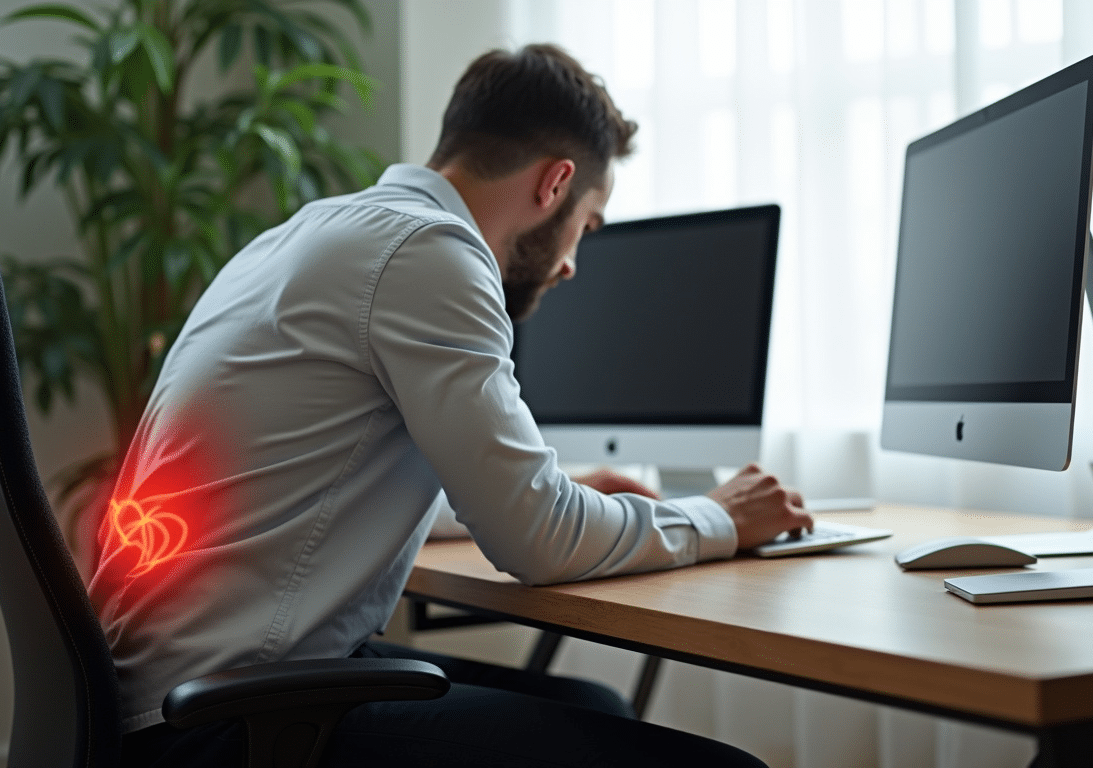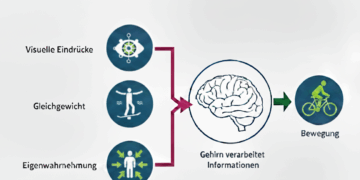Ergonomics at the workplace
Ergonomics at the workplace: Effective measures against back pain and neck tension
You probably know the situation: You've been working at your PC again and have back pain or neck tension. At Waidfuss Physiotherapy, we understand how stressful these complaints can be. They are often caused by poor ergonomic conditions at the workplace. In this article, we would like to explain to you how you can alleviate your complaints and improve your health in the long term by making simple ergonomic adjustments and regularly engaging in activity-based variety.
Tips for ergonomic workplace design
What is ergonomics?
Ergonomics is concerned with the study and design of working environments in order to promote people's health and performance. The aim is to design workstations so that you can work comfortably and safely in order to avoid strain and injury. A well ergonomically designed workstation takes into account aspects such as sitting position, monitor height, keyboard and mouse alignment and lighting.
However, ergonomics is only part of the solution. The other key to success is regular activity and variety in the working day. A sedentary lifestyle can lead to muscle tension and chronic pain, which is why it is so important to integrate movement into everyday life.
Tips for ergonomic workplace design
- Correct sitting positionMake sure that your office chair is optimally adjusted. Your feet should be flat on the floor, your knees at a 90-degree angle and your back fully supported by the backrest. An ergonomic chair back that supports your lower back can work wonders.
- Monitor settingYour monitor should be at eye level and about an arm's length away. This prevents you from having to tilt your head up or down, which can cause neck tension.
- Alignment of the keyboard and mousePlace your keyboard and mouse so that your arms are in a relaxed, slightly bent position. Avoid excessive stretching and make sure that your wrists are straight.
- Work breaks and exerciseTake regular breaks to stand up and stretch. This promotes blood circulation and reduces the strain on your muscles. Above all, activity and variety at work are crucial to maintaining your health. A short stretching routine, such as stretching your arms and tilting your head to the side, can help to relieve tension.
- Optimal lightingGood lighting at the workplace prevents you from having to strain your eyes. This can indirectly help to reduce headaches and neck tension.
- Change of workplaceUse standing desks or height-adjustable tables as an alternative to your desk to regularly change your working position. This prevents one-sided strain and encourages movement.
- Plan exercise breaksPlan deliberate short exercise breaks during the day. Short walks or light sports exercises during these breaks promote blood circulation and reduce stress.
The importance of ergonomics for your health
By adapting your workplace to ergonomic standards, you can significantly reduce the risk of musculoskeletal disorders. Regular ergonomic corrections not only promote your physical health, but also your productivity and general well-being.
But ergonomics alone is not enough. The key to success lies in the combination of good ergonomics and regular movement and variety in everyday working life.
Active exercises and variety in the workplace
An ergonomic workplace design is the basis, but it is just as important to integrate activities into your daily work routine. Here are some active exercises and tips on how you can integrate more movement and variety into your workplace:
- StretchingStart your day with a short stretching routine. Gently tilt your head from side to side, stretch your arms above your head and do shoulder circles.
- Short exercise breaksStand up briefly every hour, walk around and stretch. Simple exercises such as squats, leg lifts or a walk around the office can be very helpful.
- Dynamic sittingChange your sitting position regularly and try not to remain in a fixed position for too long. Use an exercise ball as a seat or a balance cushion to vary your posture.
- Strengthening exercisesIntegrate light strengthening exercises that you can also do at work, such as wall push-ups or calf raises. These exercises strengthen your muscles, improve your posture and prevent pain.
- Walking meetingsIf possible, move meetings outside and go for a walk during them. Exercise in the fresh air is invigorating and promotes creative thinking.
Support from Physiotherapie Waidfuss for ergonomics and activity in the workplace
Our experienced physiotherapists at Physiotherapie Waidfuss provide you with targeted support in optimizing your workplace. We offer individual consultations and ergonomic analyses to adapt your workplace in the best possible way. We take your specific needs into account and give you practical tips on how you can make your working environment more ergonomic.
We also show you effective, active exercisesthat you can easily integrate into your daily work routine. These exercises help to prevent tension and strengthen your muscles. For example, regular stretching exercises and short movement breaks can help to increase flexibility and relieve pain.
Our advice goes beyond pure ergonomics, however. We also offer you tips and exercises to integrate activity and variety into your everyday life. After all, the combination of an ergonomically designed workplace and regular exercise is the key to success.
Our goal is to help you design your workplace in such a way that you can work healthily and pain-free in the long term. Contact us todayto create a consultation and exercise plan tailored to your individual needs. Let's work together to improve your ergonomic conditions and your daily exercise habits and increase your well-being at work.
With these simple but effective tips, you can ergonomically optimize your working environment and promote your health in the workplace. Remember: ergonomics and regular activity and variety are the keys to success. Rely on the expertise of Physiotherapy Waidfussto treat your complaints sustainably and increase your well-being.
Categories
- Osteoarthritis
- Leg
- Extensions
- Dry needling
- Elbow
- Foot
- Balance
- Hand
- Hip
- Pine
- Knee
- Headache
- Lymphatic drainage
- Mobilization
- Muscle pain
- Myofascial therapy
- Neck pain
- Physiotherapy Höngg
- Physiotherapy Wipkingen
- Physiotherapy Zurich
- Rehabilitation
- Back pain
- Shoulder arm
- Shoulder pain
- Pregnancy
- Dizziness
- Sports
- Trigger points
- Exercises
- Lower leg
- Injury prevention
- Wade
- What to do?
- Wound healing
Neuro-focused training in physiotherapy
What is neuroathletic training (NAT)? Neuroathletic training (NAT) is a modern and holistic therapeutic approach...
Read moreAfter the cruciate ligament rupture: The way back to sport in Zurich
Your way back to sport after a cruciate ligament rupture A wrong step, an abrupt turn, a cracking sound...
Read moreSki preparation Zurich: Neuro-focused training for safe performance on the slopes
Ski preparation Zurich: Neuro-focused training for safe performance on the slopes at Physio Waidfuss The first snow...
Read morePhysiotherapy for seniors Zurich Wipkingen
Movement is life - even at 60+ Growing older brings with it many positive aspects: more time for family and...
Read more





